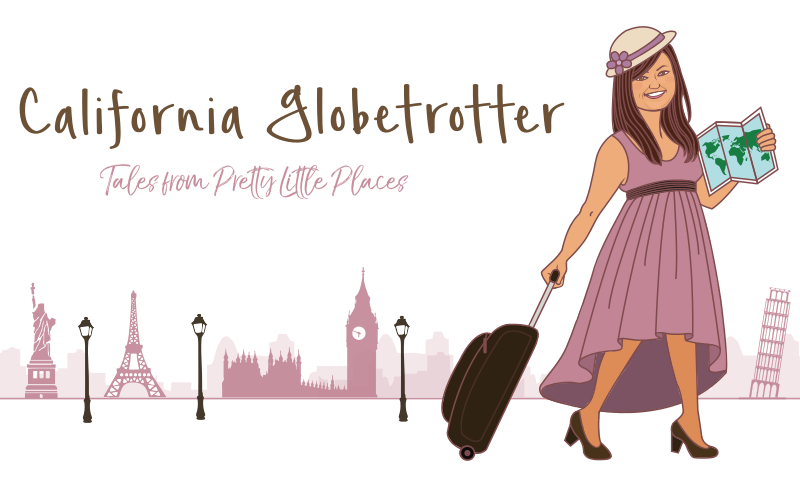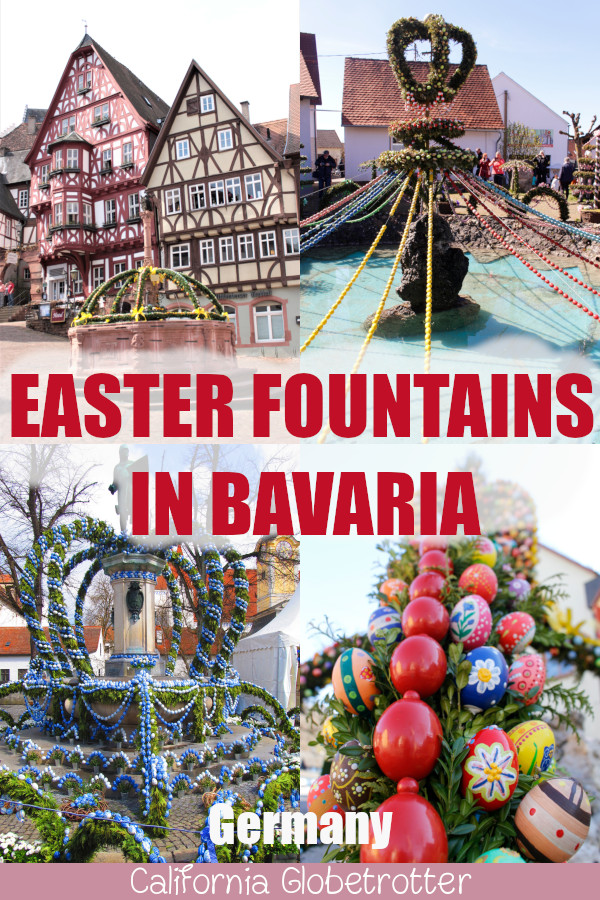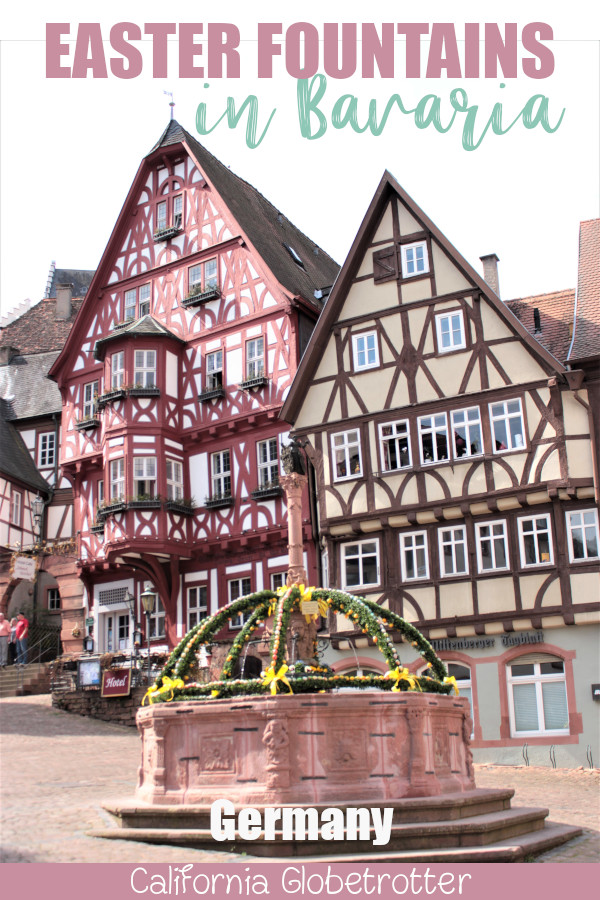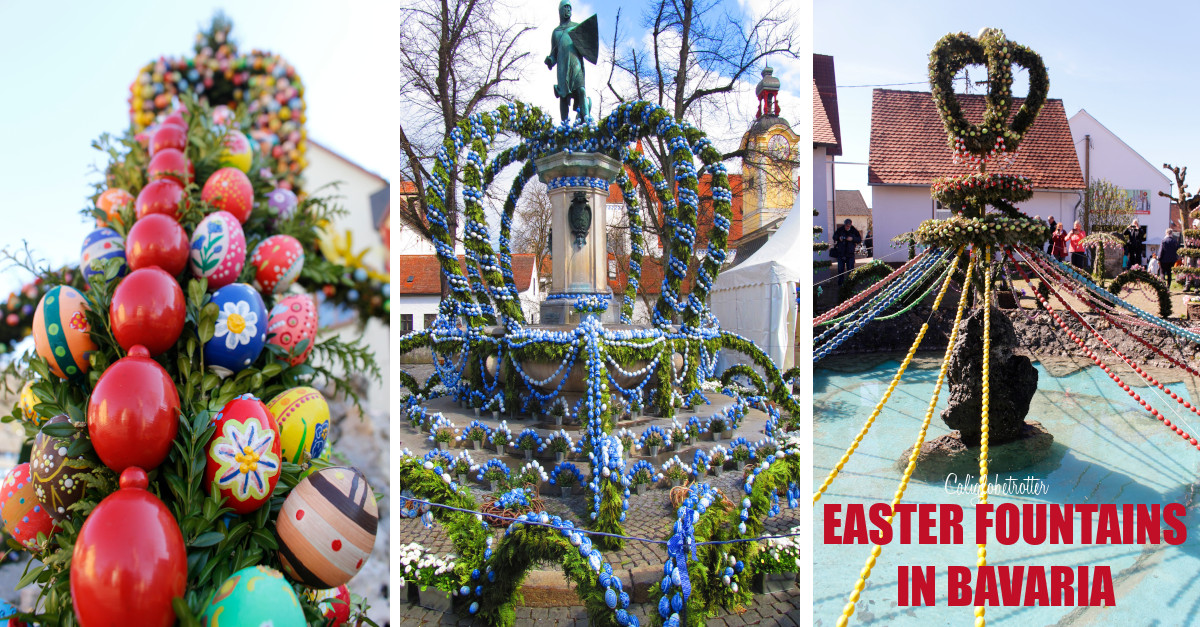
Disclaimer: This post contains affiliate links. If you click on one and make a purchase, I might make a little extra spending money, at no extra cost to you. As always, all opinions are my own and these products/services have been found useful during our travels and come highly recommended to you from yours truly!
Spring. The time of year where Germans prune back their bushes, plant some flowers and decorate their bare bushes with colorful Easter eggs to brighten up the warming days. They come in every shape and size and can be found on at least one bush or tree in the yard until Easter. But, it’s not just the trees they decorate with Easter eggs. There’s a tradition of even decorating water fountains in the center of small villages. Where and why can you find these ‘Osterbrunnen‘? Let me enlighten you!
Want to hunt Easter Fountains in Germany? PIN IT FOR LATER!!
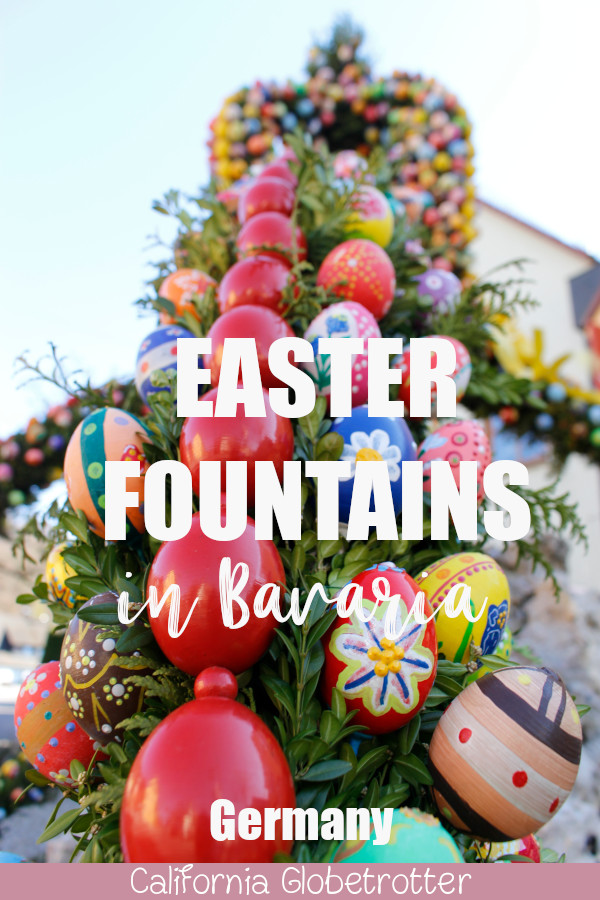
Würzburg: Exploring the Franconian Wine Capital
The Fairy Tale Town of Rothernburg ob der Tauber
First of all, let me give you a little back story. The first Easter fountain I ever saw was in Ingolstadt while visiting my husband’s family in 2015. It was quite the sight to behold and one of the largest I would come to see. It was beautifully decorated in matching blue and white eggs and I was instantly fascinated that hundreds of delicate eggs were intricately linked together with garland and place over the fountains. I was mesmerized by some of the detail on the hand painted Eggs and the vibrancy it added to the town square.
* Sadly the Ingolstadt Easter Fountain is no longer available for display as volunteers have decided against continuing after 20 years.
Later, in 2017, we were exploring some cute half-timbered towns, Miltenberg and Michelstadt, which also surprisingly had Easter fountains. I instantly went home and researched and mapped out a road trip through Franconia to find more of these beautiful fountains on display for a short time. Unfortunately, I had missed my window for 2017. So a screenshot of my road trip has sat on my phone since that very day. Every year we say we will go and find them, but every year that has passed has passed without said road trip either due to weather, work or the last few years’ health problem. Finally, after an eternity, we managed to have sunny blue skies, a day off from work and health restrictions lifted which allowed us to hunt for Easter fountains with a new addition to the family.
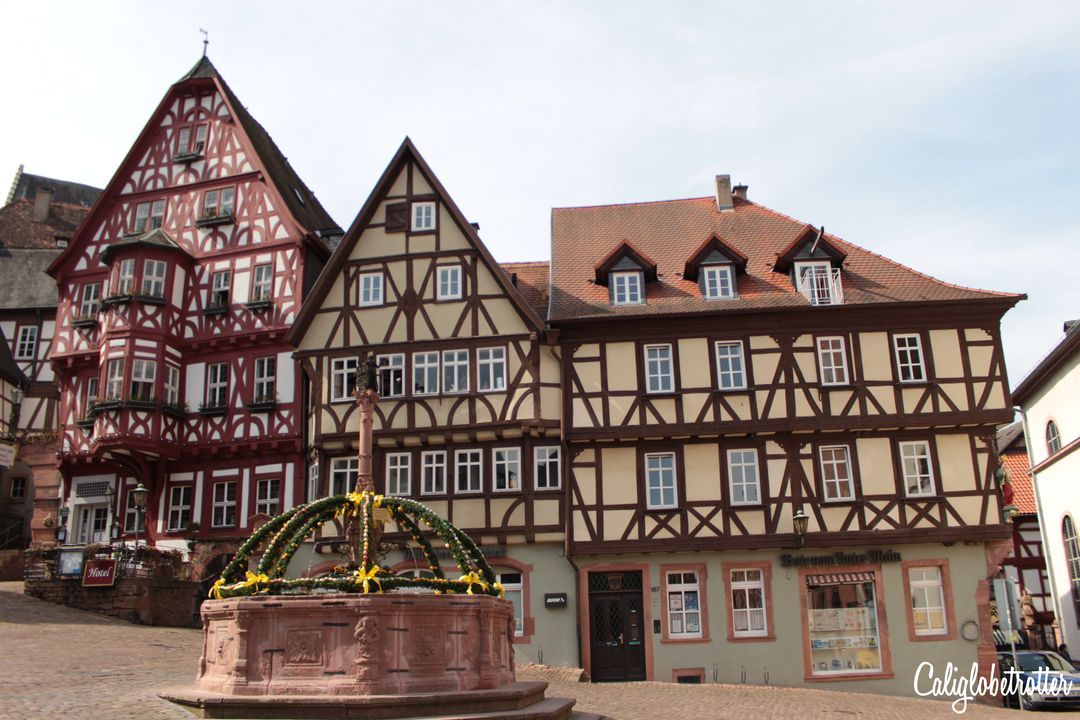
Miltenberg Easter Fountain / Miltenberg Osterbrunnen
At the Alter Marktplatz across from the St. Jakobus Church
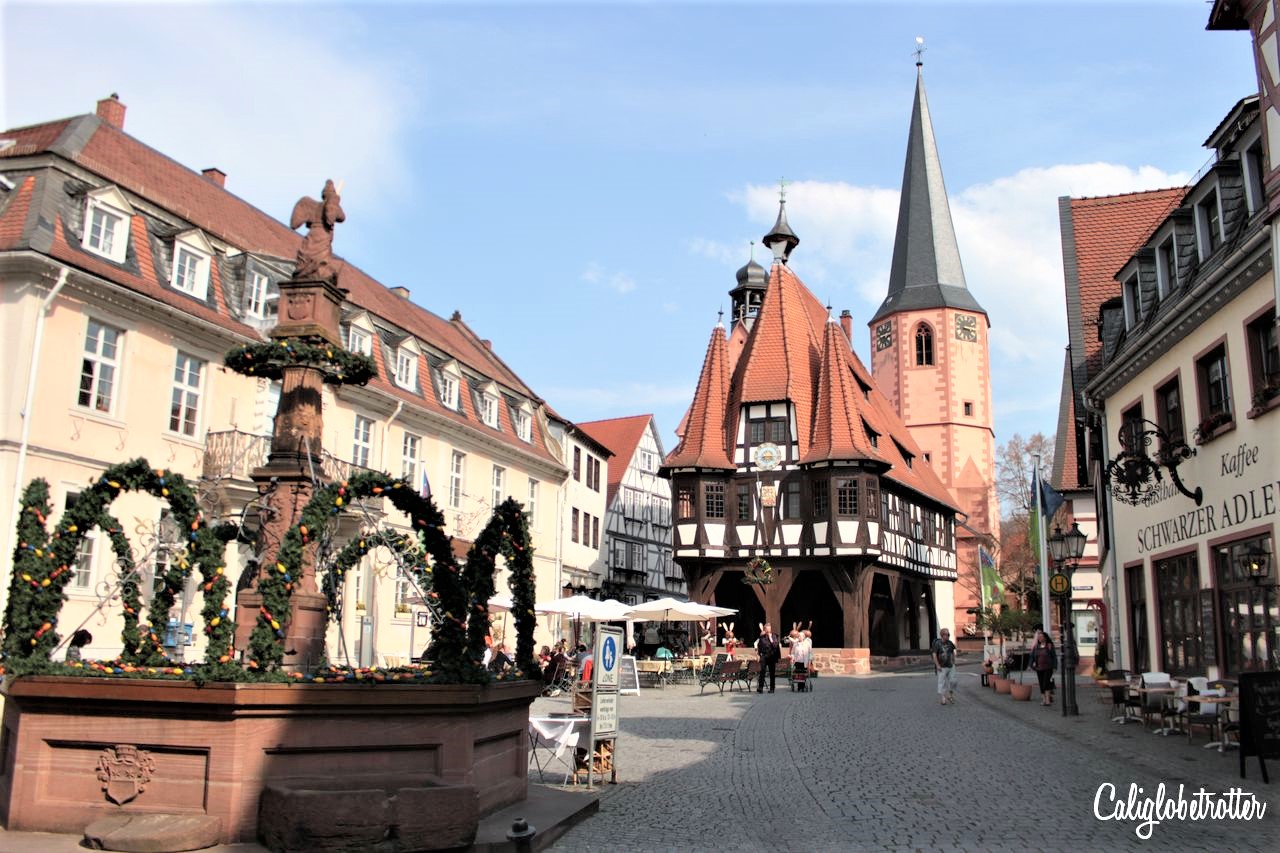
Michelstadt Easter Fountain / Michelstadt Osterbrunnen
Located directly in front of the Michelstadt Rathaus (city hall)
What is the meaning of the Easter Fountain?
You might ask what are “Osterbrunnen” and what is the purpose. They say that the tradition began in the Franconian region of northern Bavaria. Here, not only does the town of Aufseß have a Guinness World Record for having the highest density of breweries, but they say the tradition of decorating the town fountain began in 1909 and has been a beloved German Easter tradition ever since! Sadly, the tradition fizzled out due to WWII, but in the 1950s, research was done to help revive the tradition, before finally picking up popularity again in the 1980s, and today, it’s one of the best things to see in Upper Franconia.
But don’t be surprised if you also find a group of locals standing around a smaller, quaintly decorated fountain with a tap…this is a special fountain which only spouts beer, as we saw a group of locals doing in Gößweinstein.
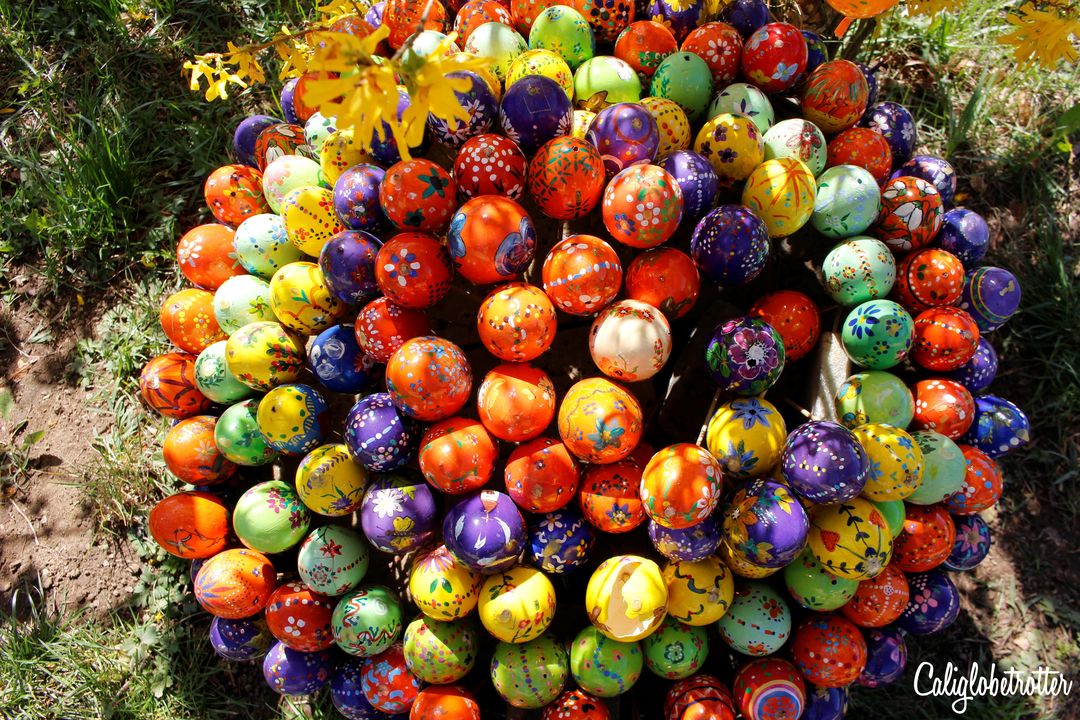
Considering that the small town of just 1,350 has 4 breweries, it should come as no surprise that water is an important necessity in the brewery business considering that beer is a staple of German life. As a way to give thanks for for the water and the yearly fountain cleansing process, townspeople began to decorate the fountains each spring. Slowly, the tradition spread beyond the Fränkische Schweiz to other parts of Bavaria.
Of course, there is a bit of a religious connection to decorating the fountains around Easter time as well, predominantly honoring the water, which is essential for life and for Easter which is the feast of renewed life. While at the same time, eggs can be a symbol for fertility.
The fountains are decorated with evergreen garland and Easter eggs which have been delicately hand-painted and linked together are then attached to the garland. The eggs are traditionally painted by the local Women’s Club, often preparing up to weeks in advance before displaying the final masterpiece. Because of the delicate nature of the eggs, which are either from chickens, geese or even ostriches, the garlands are carefully stored year after year, thus saving some work for the ladies, though perhaps there are many that need replacing.
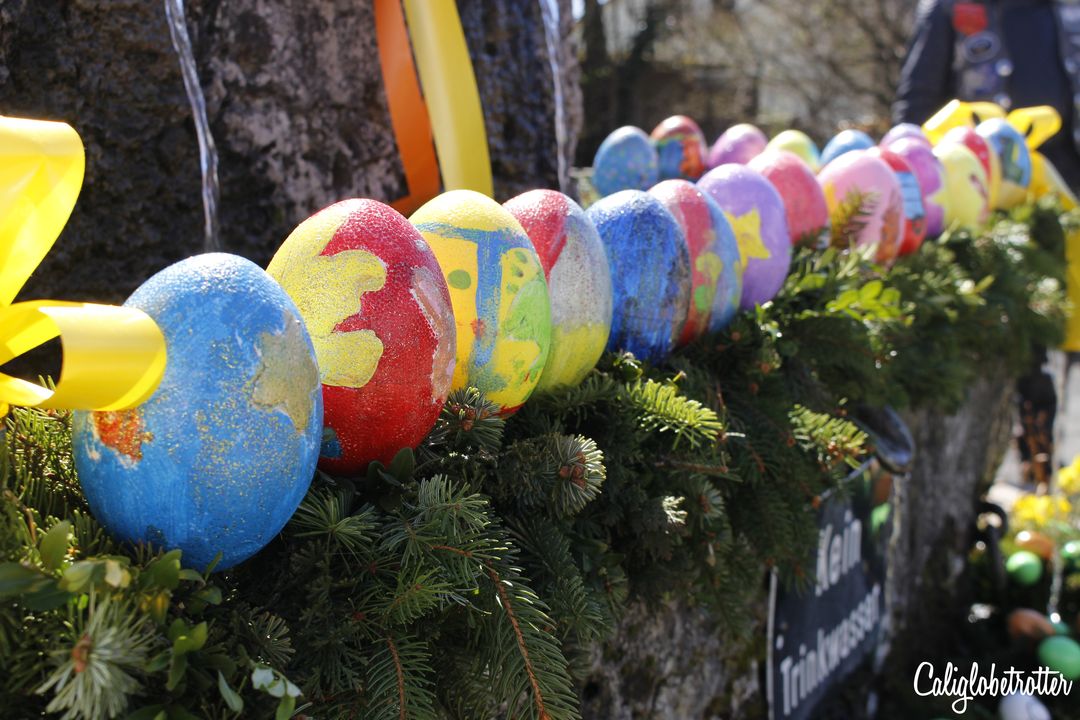
These colorful, hand-painted Easter eggs are a subtle but vibrant reminder that the cold, gloomy days of winter and spring are drawing to an end and warmer days are just around the corner.
Where can I find Easter Fountains in Germany?
With over 200 towns and villages throughout the Franconian Switzerland (Fränkische Schweiz) region (thus called this because of the endless hills and streams which litter the region), it will be easy to find an Easter Fountain and sometimes if you’re lucky, the town may even have more than one. But have no fear. Don’t think that Easter Fountains can be found only in Northern Bavaria. No. They can be found in central and southern Bavaria as well. It might be one of the most unusual things to do in Germany, but they’re still fun to go find!
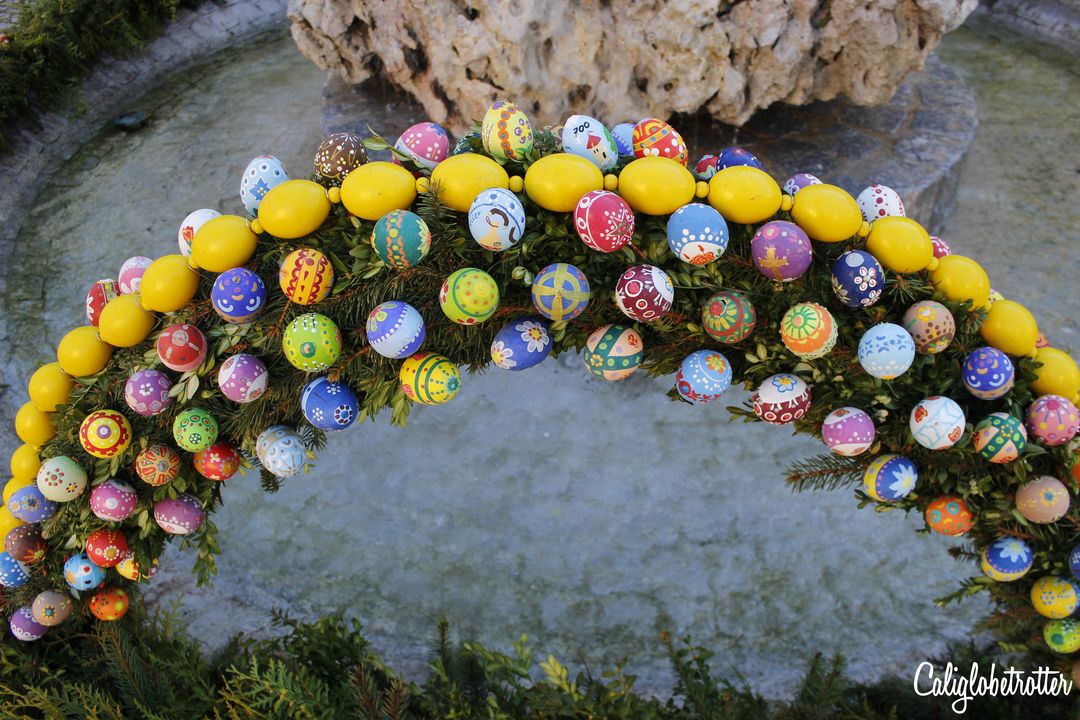
Osterbrunnen are typically decorated starting on Palm Sunday and last for about 3 weeks and in this short time frame, bus loads of people are bustled from one small village to the next in search of the best Easter fountain. The most popular Easter Fountain can be found in the small village of Biberbach in Egolffstein, where upon arrival we were surprised to find such bus loads of people surrounding the fountain, a brass band playing traditional Franconian music and a temporary parking lot for overflow.
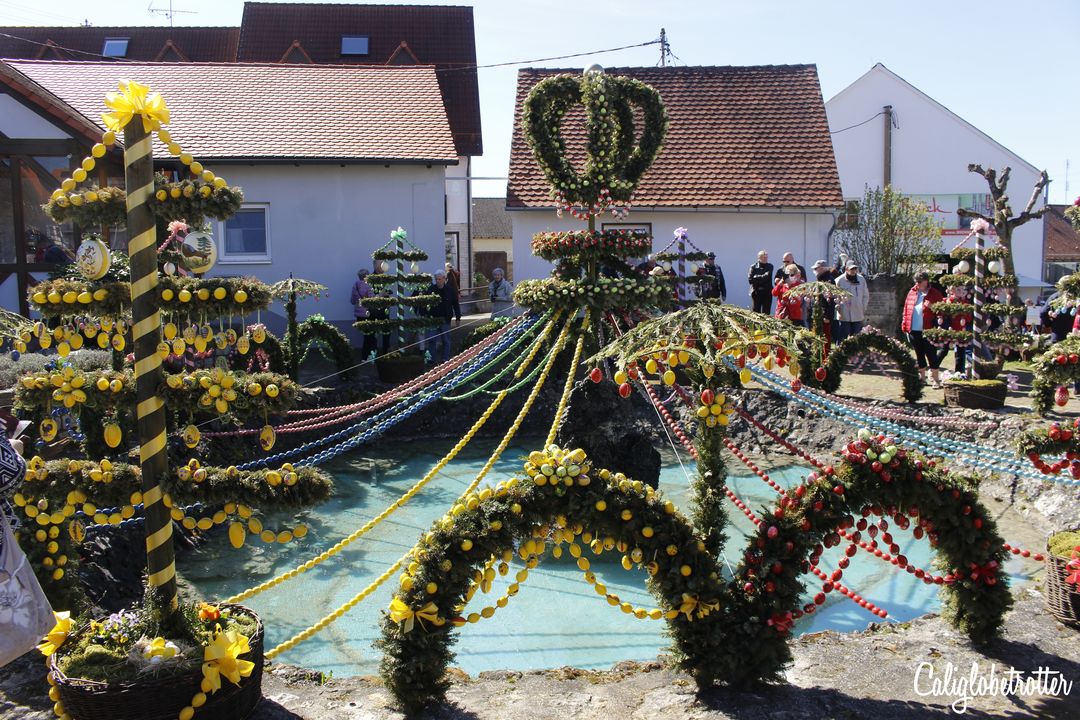
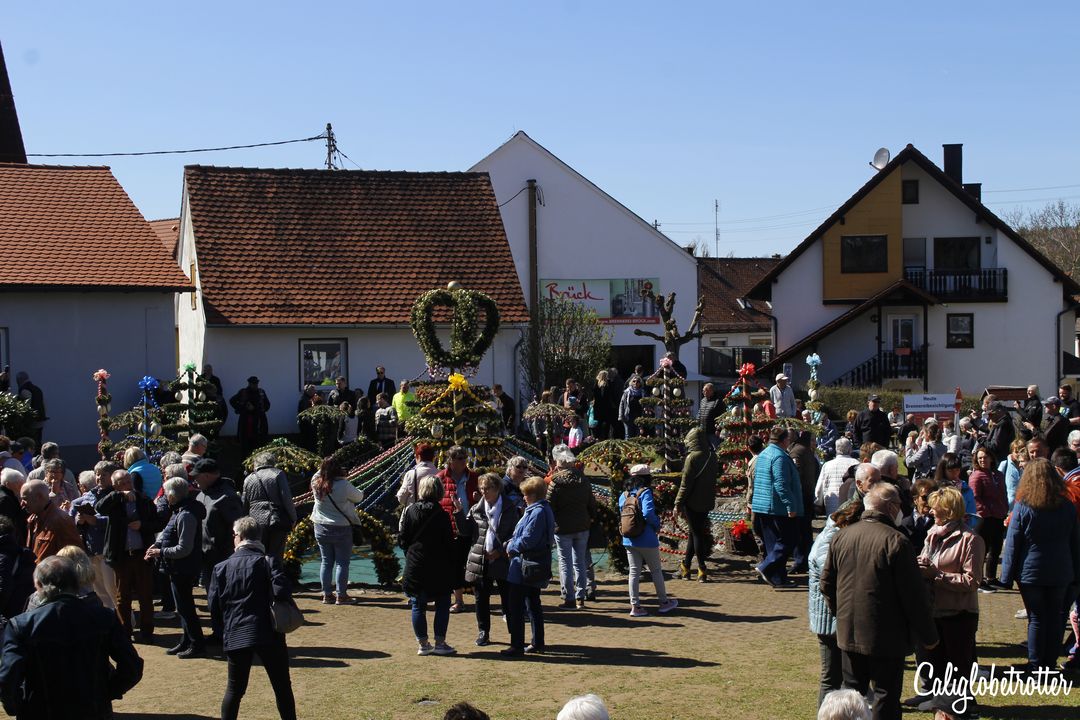
What makes Biberbach so popular? Not only is it the largest fountain covered in eggs, but they hold two Guinness World Records for having the most Easter eggs on a fountain with over 11,000 eggs! But with some villages, there can be a bit of a competition to out do one another, and in the town of Sulzbach-Rosenburg, they once adorned their fountain with over 16,000 eggs! It’s a drastic difference when compared to the fact, that on average, most Easter Fountains have AT LEAST 1,800-2,000 eggs!
Some fountains simply have a garland draped over the fountain in a simple manor, while some are a bit more extravagant with the form of a crown shaped by the garland which adds a bit of extra symbolism to the fountain.
What are the Easter Traditions in Germany?
Like Americans, Germans celebrate Easter in much the same way in terms of family gatherings and attending church services. However, they go a bit further with decorating their trees outside with also vibrantly colored Easter eggs. Germans are not super big into coloring fresh eggs like we do in the US, and often you can even buy pre-dyed Easter eggs in the grocery stores, which in my opinion, takes out all the fun. Instead, it’s more popular to blow out the eggs and then delicately hand-paint them, which are then collected in Easter baskets. The eggs are then hidden by the Easter bunny (Osterhase) for the children to find the next day.
Houses are also decorated with Easter decor with traditional Easter symbols like the Easter bunny, chicks and eggs. Easter in Germany is quite a colorful affair!
Towns with an Easter Fountain
Here are some of the towns which we found driving around which had an Easter Fountain!
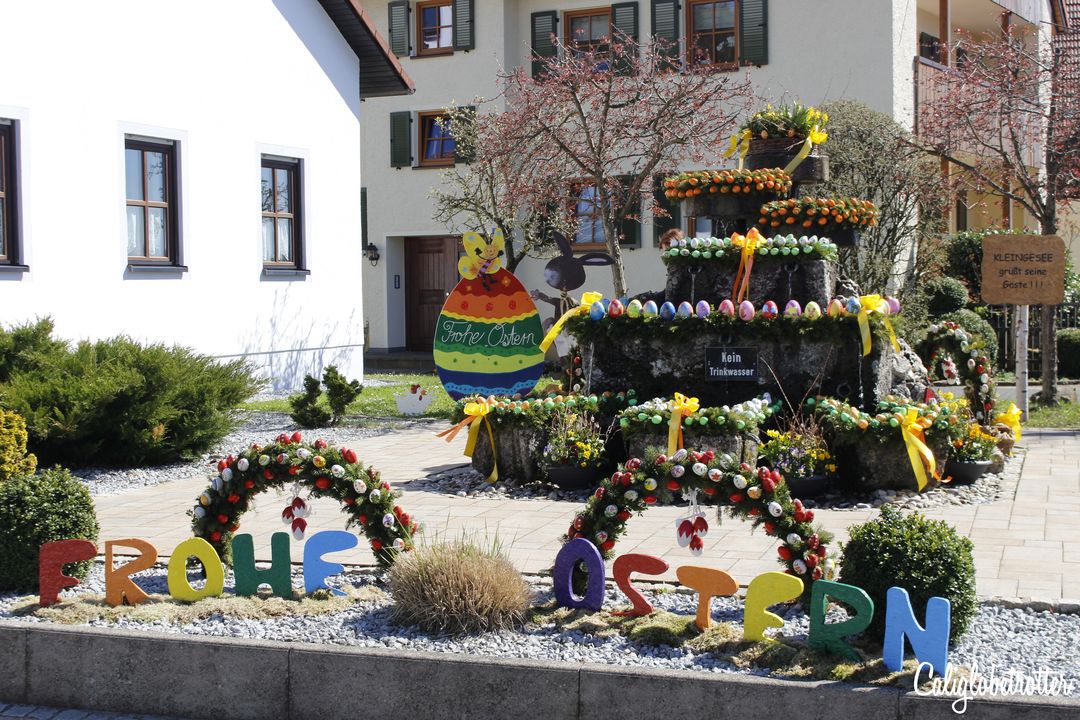
Kleingesee Easter Fountain / Kleingesee Osterbrunnen
91327 Gößweinstein, Kleingesee Wine Route, Kleingesee
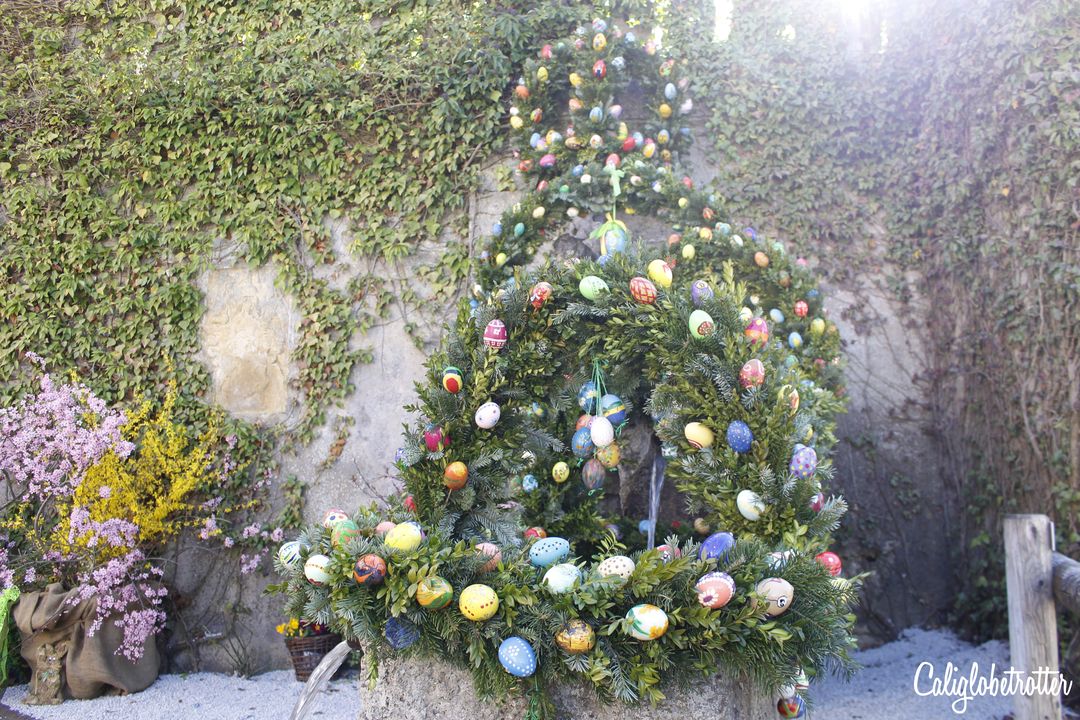
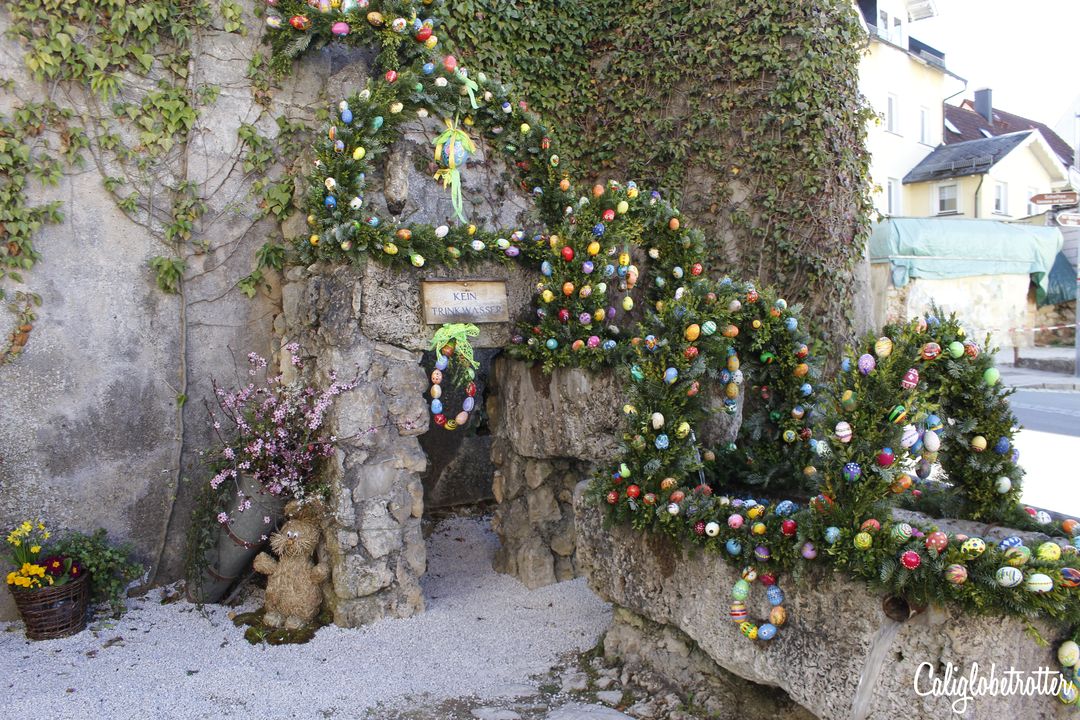
Gößweinstein Easter Fountain / Gößweinstein Oster Brunnen
On Balthasar-Neumann-Straße next to the Gößweinstein Church
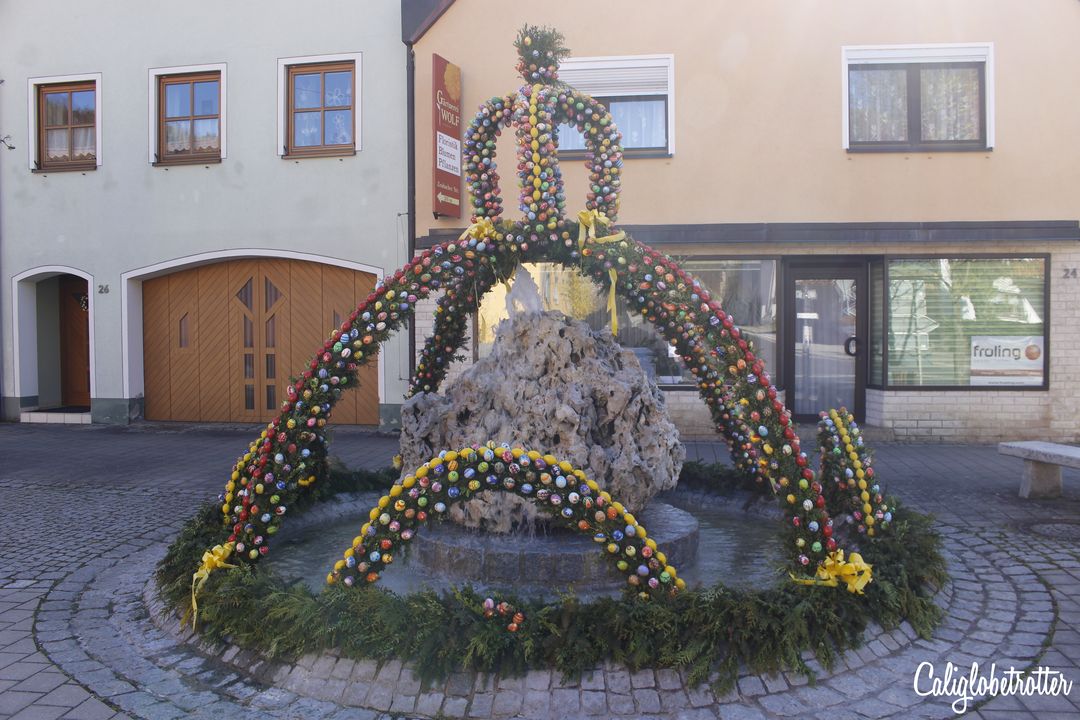
Waischenfeld Eastern Fountain / Waischenfeld Osterbrunnen
Plärrer, a large square on the road towards Langenloh/Kirchahorn
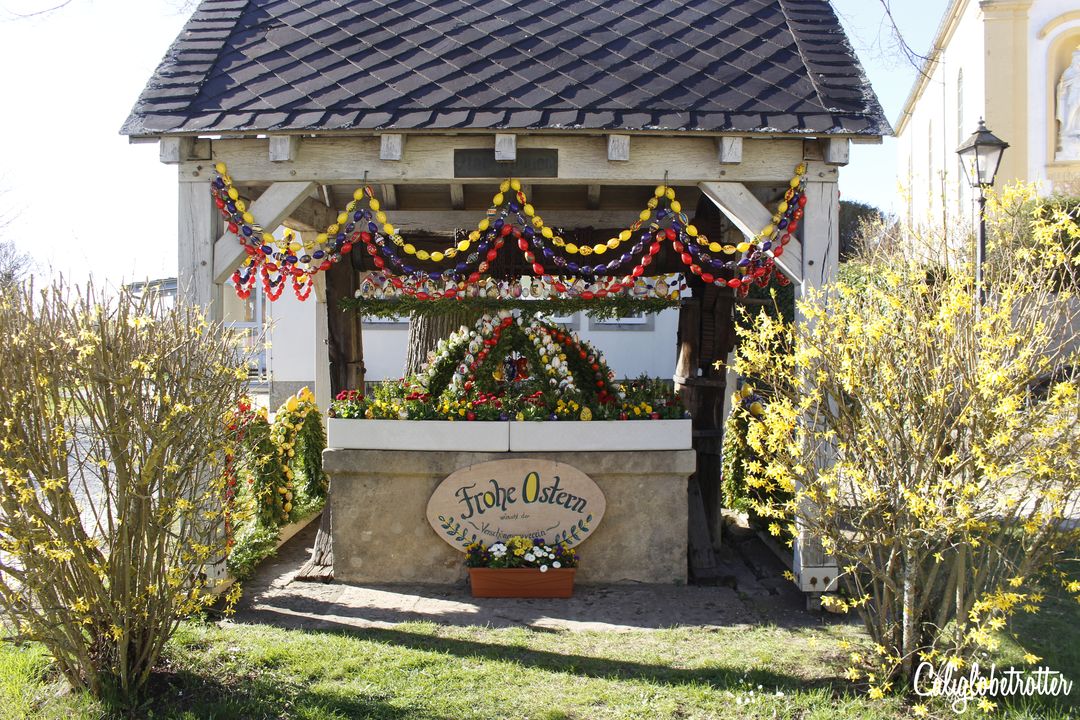
Hollfeld Easter Fountain / Hollfeld Osterbrunnen
Next to the Parish Church of the Assumption of Mary on Steinweg
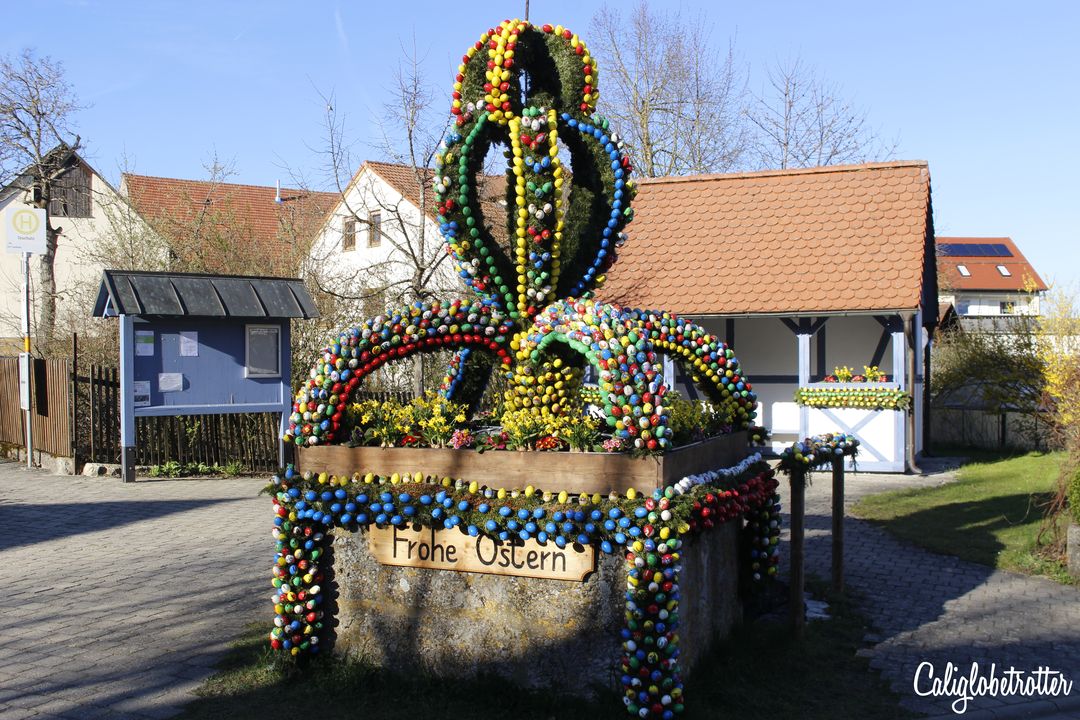
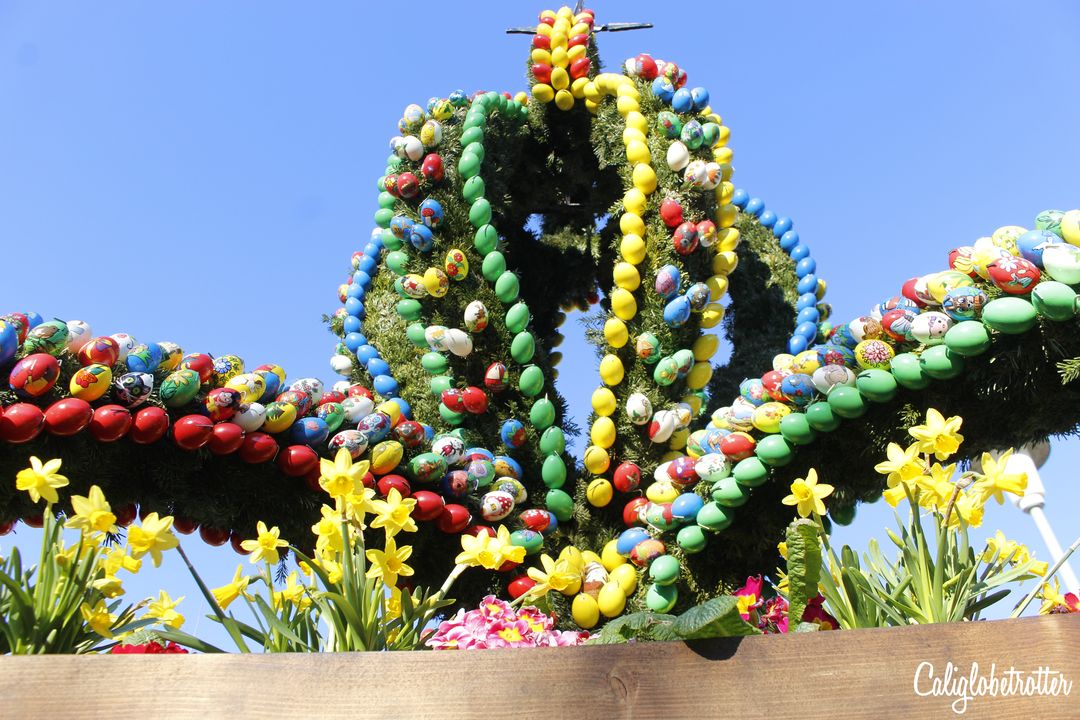
Teuchatz Easter Fountain / Teuchatz Osterbrunnen
In the middle of the village, along the main road
Regensburg Easter Fountain am Stadtamhof / Regensburg Osterbrunnen am Stadtamhof
In front of the Spitalkirche St. Katharina
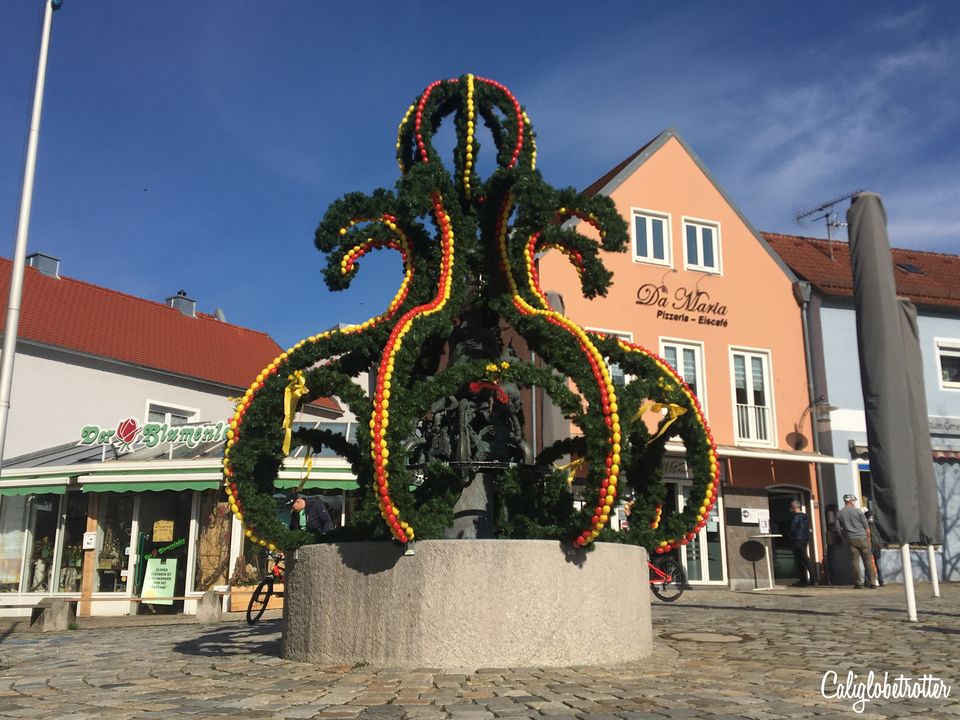
Regenstauf Easter Fountain / Regenstauf Osterbrunnen
At the Marktplatz in front of the Pizzeria Eiscafe “Da Maria”
Other Notable Towns with an Easter Fountain:
Personal Opinion of Easter Fountains
They’re amazing and I wish they were all as gorgeous as Ingolstadt’s or as big as Biberbach’s. So much color and detail goes into putting together these amazing fountains and I wish every town had one! I find it interesting that some towns, like Regensburg, have one, but it’s so small, it’s hardly worth mentioning….not to mention that it took me 10 years of living in this town to discover we even had one!
I also find it interesting that some fountains design changes depending on the year. For example, for the town of Kleingesee, I saw a photo of the fountain topped not by a crown, but with the symbol of a beer glass, only it wasn’t part of the display this year. Turns out, perhaps a local club might have the honor of decorating the fountain in a particular color or design in support of their club.
I also find it interesting that not all fountains are in the center of each town, though most are. Some are simply along the main road in a town, while others are in the main market square.
Best of all, it’s definitely one of the best family friendly things to do in Germany! Hop in the car and go hunting for Easter fountains, see a bit of Germany instead of hiding eggs in bushes. The kids will love checking out all the different fountains, some more exciting than others!
Liked this post? PIN IT FOR LATER!!
Other Related Posts:
A Local’s Guide to The Historic Town of Regensburg
Crowning of the Alpine Cows at Lake Königssee
A Bavarian “Thanksgiving” in Bad Gögging
If you’re interested in visiting Germany and are looking for more information, I highly recommend using the The Rough Guide to Germany or Lonely Planet for more in-depth info! Without these guides, I would be lost! This is my travel Bible!
 |  |  |  |
Disclaimer: This post contains affiliate links. If you click on one and make a purchase, I might make a little extra spending money, at no extra cost to you. As always, all opinions are my own and these products/services have been found useful during our travels and come highly recommended to you from yours truly!
